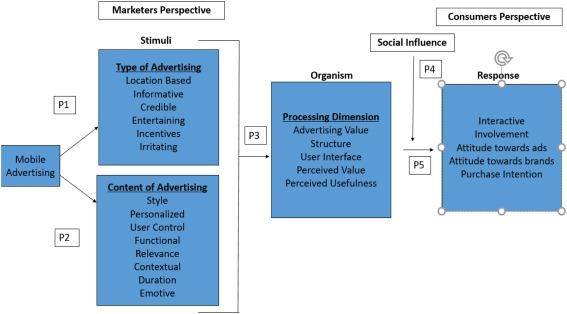Top Global Policies Shaping the Future of Education: Key trends and Strategies Unveiled
Education is rapidly evolving, influenced by technological advancements, socio-economic shifts, and the ever-changing demands of the global workforce. As governments and organizations recognise education as the cornerstone of sustainable progress,new global policies and strategies are shaping the future of learning. In this article,we’ll explore the top global education policies,analyze key trends,and provide actionable strategies for educators,policymakers,and stakeholders to drive impactful change worldwide.
The Importance of Educational Policy in a Globalized World
The role of comprehensive and forward-thinking educational policies cannot be overstated. These frameworks influence curriculum standards, teacher training, access to education, digital transformation, and lifelong learning. With globalization, international benchmarks such as the United Nations Sustainable Development Goal 4 (SDG4) – which aims to ensure inclusive and equitable quality education – guide policy decisions across continents.
- Ensuring equity: policies tackle inequalities across gender, socioeconomic status, and geography.
- Incorporating technology: Guidelines to foster digital literacy and 21st-century skills.
- Fostering collaboration: Encouraging joint efforts between governments,NGOs,and private sectors.
Key Global Education Policies Driving Change
Let’s delve into some of the most influential global education policies that are set to define the next decade:
1. united Nations SDG4: Quality Education for All
Adopted by 193 countries, SDG4 seeks to “ensure inclusive and equitable quality education and promote lifelong learning opportunities for all” by 2030. this goal drives policy development in areas such as worldwide access, literacy, gender equality, and teacher training.
- Focus on inclusive education for marginalized and vulnerable communities.
- Monitoring progress through global reports and country-specific benchmarks.
- Expansion of early childhood, technical, and vocational education.
2. digital Transformation and EdTech Integration Policies
The COVID-19 pandemic hastened the adoption of digital learning worldwide. Governments have responded by creating policies encouraging digital inclusion, e-learning platforms, and teacher digital competencies.
- National digital education strategies (e.g., EU Digital Education Action Plan).
- Promoting public-private partnerships to expand internet access and device availability.
- teacher training initiatives in online pedagogy and digital content creation.
3. Policy Frameworks for Lifelong Learning
Changing demographics and the future of work require education systems to support lifelong learning. Global policies now encourage continuous skills development, retraining, and non-traditional learning pathways.
- Pilot projects for adult education and upskilling programs.
- Flexible learning opportunities,such as micro-credentials and online courses.
4. Equity and Inclusive Education Laws
Closing the gap in educational opportunities is a top priority. Policies now emphasize support for girls, refugees, students with disabilities, and linguistic minorities.
- Implementation of gender-sensitive curricula.
- Universal Design for Learning (UDL) to cater to diverse learning needs.
- Localized content in multiple languages.
5. Environmental and Citizenship Education
With climate change at the forefront, many countries have integrated Environmental and Citizenship Education into their national curricula. UNESCO’s education for Sustainable Development promotes eco-literacy and civic engagement.
- Mandatory environmental education modules.
- Community service and global citizenship programs.
Emerging Trends Shaping the Future of Education
The landscape of global education policy is closely tied to emerging trends in technology,pedagogy,and societal needs. Hear are the top trends that will define the future:
- Personalized Learning: Harnessing AI and big data to tailor instruction to individual needs.
- Hybrid and Blended Models: Combining in-person and remote learning for versatility.
- Global Competence: Preparing students for cross-cultural collaboration and problem-solving.
- Competency-Based Education: moving from time-based to mastery-focused progression.
- Skills for the Green & Digital Economy: Integrating STEM, critical thinking, and sustainability into core curricula.
Case Studies: Global Education Policy in Action
Finland: A Model for Equity and Innovation
finland has consistently ranked high in global education rankings. Its policies focus on teacher autonomy, minimal standardized testing, and inclusive support for students.
- Highly qualified and well-respected teaching professionals.
- Flexible curricula driven by student needs and interests.
Singapore: Blending Rigor with Lifelong Learning
Singapore’s strategies combine rigorous core standards with a forward-looking agenda for skills development, critical thinking, and lifelong learning.
- Holistic Education Framework and SkillsFuture movement.
- Education and Career Guidance (ECG) from an early age.
Brazil: Expanding Access Through Digital Inclusion
Brazil’s policies highlight efforts for digital inclusion in underserved regions and investment in teacher ICT training.
- ProInfo program: Distributing computers and providing internet access to public schools.
- E-learning content in local languages to reach indigenous populations.
Benefits of Aligningwith Global Education Policies
Embracing global education trends and aligning with leading policies brings significant advantages:
- Enhanced global competitiveness: Equipping students with skills for the international workforce.
- increased educational equity: Reducing possibility gaps and promoting social mobility.
- Future-ready learners: Preparing for technological disruption and emerging industries.
- Sustainable development: Contributing to broader global goals, such as environmental protection and social inclusion.
practical Tips for Schools and Policymakers
- Engage in global dialogues and benchmarking exercises.
- Leverage technology to enhance access and personalization.
- Foster local partnerships to address unique community needs.
- Prioritize teacher professional development and support.
Conclusion: Navigating the Future of Education Through Policy and Innovation
The future of education is being reshaped by bold global policies and forward-thinking strategies. Whether through digital transformation, inclusive practices, lifelong learning frameworks, or sustainable development initiatives, nations are investing in human capital for a competitive, equitable, and resilient world.
By understanding top global education policies and key trends, educators, policymakers, and parents can collaboratively drive meaningful transformation. The best results come from adapting strategies to local contexts while maintaining a vision grounded in global best practices. with continuous innovation and steadfast commitment, the future of education is indeed bright.
stay tuned to our blog for the latest updates on education policy trends, innovative teaching strategies, and global learning insights!

